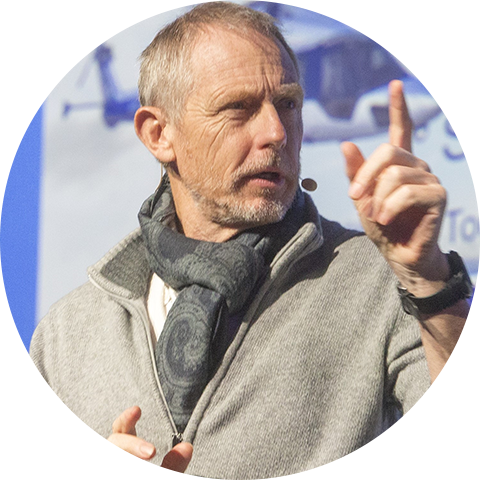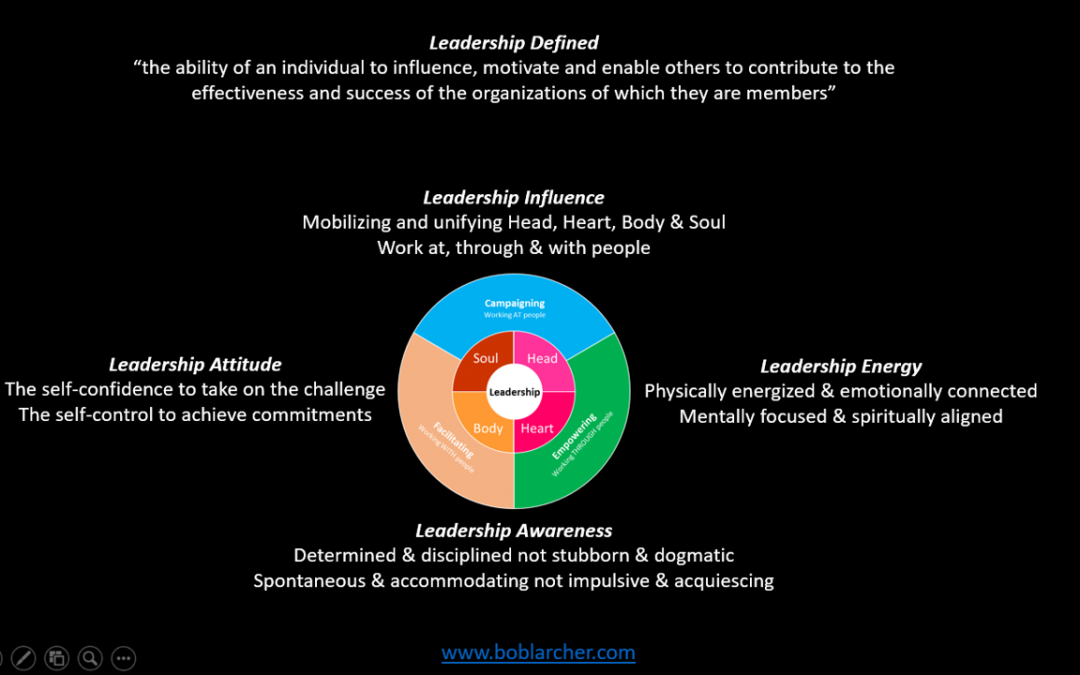If you ask a dozen or so chemical engineers to define Reynolds number, they would all undoubtedly reply, “the ratio of inertial forces to viscous forces within a fluid which is subjected to relative internal movement”
They will even be able to cite the equation Re = ρuL/μ
I know this because I have a degree in Chemical Engineering and spent about 10 years in and around the chemical industry
If you ask a dozen or so leadership development practitioners to define leadership, they would all undoubtedly say something different and there is no equation defining leadership
I know this because I am a leadership development practitioner and have spent the last 35 years designing and delivering leadership development programmes
To be fair to leadership development practitioners, there would probably be common elements within their different answers. Most would mention influencing or, maybe, inspiring, motivating, encouraging, etc. They would certainly talk about others (team members, colleagues, stakeholders), they would undoubtedly talk about objectives (goals, deliverables, milestones) and striving for success within some kind of organisation (political, charitable, business, project, etc.).
Maybe it’s my scientific background but I like to be clear as to what I am talking about when working on something.
I use the leadership definition proposed by the GLOBE Study
“the ability of an individual to influence, motivate and enable others to contribute to the effectiveness and success of the organizations of which they are members”
This means that it is about someone impacting other people to get something done within some kind of organisation – a group of friends doing something together, a business developing & producing goods, a charity working to make people’s lives better, a government managing a crisis, …….
The key word is influencing; it is NOT about ordering, it is NOT about commanding and it is NOT about telling, others to contribute to the effectiveness and success of the organizations of which they are members – it is about INFLUENCING
The GLOBE (Global Leadership & Organisation Behaviour Effectiveness) study, initially headed up by Robert House (he of the famous House-Mitchell Path-Goal Theory of Leadership), identified 21 universally desirable or undesirable leadership characteristics that contribute to influencing, or enabling others, or groups to contribute to the success of the organization or task of which they are part of.
Amongst the universally desirable characteristics there are, Integrity, Visionary, Diplomatic, Modest, Humane, Team Orientated, …..
Even though Decisive came out as a key characteristic, there is no mention of telling, ordering, etc.
One of the hallmarks of leadership is “making a difference”, not necessarily world making differences or even country making differences but simple everyday differences.
Here are some examples of someone influencing others to contribute to the effectiveness and success of the organizations of which they are members (note, the “I” in the examples is not me):
I am on in the mountains with some friends and we have decided to be on the summit before 2.00 pm in order to have time to get back down before it gets dark; we have spent so much time looking at the scenery and the wildlife that we now risk missing our deadline. I get everyone’s attention and start to discuss how they see the rest of the day spanning out; do we carry on as we are and risk getting caught in the dark, do we stop looking at the scenery and “yomp” our way to the top or do we do something else?
A group of adolescents has started hanging out on my street corner; they are not doing any harm (yet) but they are occasionally a bit boisterous and noisy. I go up to them and start a conversation with them about what they might like to do.
I am at work with colleagues and it’s the twenty-fifth minute of our fifteen-minute coffee break; there is a heated discussion with regards to the current project and the fact that the deadlines are too short. I suggest to my colleagues that we take look at how we could organise ourselves to use our time better.
I am in a parent teacher association meeting and almost everyone is criticising the school’s choice for its end of term project. I ask those who have yet to express anything what they think about the pros and cons of the project and then get the group come up with concrete improvements to the project.
All of the above are examples of making a difference; it may not be MLK at the Lincoln Memorial telling everyone that he has a dream and it may not be JFK telling people to ask not what the USA can do for them but what they can do for the USA, but they are still examples of making a difference.
The above examples are simple but not necessarily easy; your group of friends might resent you trying to take control, the kids on the street corner might tell you to “get lost” (or worse) and your colleagues might accuse you of being on the side of management. Making a difference is never easy; the easy way out may be to let you and your friends become benighted, let the adolescents become delinquents and join in the winging and whining with you colleagues – but that’s not what leadership is about!
So, if leadership is about influencing, how do we go about “influencing” people? We can’t tell them to do something and we can’t order them to do something.
We can influence people “intellectually”, through structured and well thought out arguments; showing that we have analysed the issue from different angles to form a convincing case.
We can influence people “emotionally” through passion and enthusiasm; by showing them empathy & compassion and articulating that we are aware of the impact of the problem on them.
We can influence people “physically” through looking the part; showing that we are self-assured & alert, up to the challenge and ready to act.
We can influence people “spiritually” through beliefs and values; by showing that the issue has meaning for us and that solving the problem impacts our values and is important to us.
And, ideally, we can do all at once; we are knowledgeable, we exude empathy, we look the part and we are in it for something bigger than ourselves.
We influence people by mobilizing and unifying our Head, Heart, Body & Soul in order to work AT, THROUGH & WITH people to get things done.
Working AT others is about creating the desire to act within others; it’s about inspiring others to want to be part of the journey and part of the success, it’s not simply about informing or giving them the message, it is about being the message.
Working WITH others is about enabling or helping groups of people to make decisions and take collective actions that will contribute to the success of the organisation they are part of, it’s not about telling or ordering, it’s about facilitating.
Working THROUGH others is about enabling or helping individuals to make their individual contribution to success; it’s about creating an environment were people can take risks, try things out and learn. Again, it’s not about telling, it’s about empowering.
In order for the above to happen, we need three leadership enablers
Leadership attitude gives us the self-confidence to take on the leadership challenge and the self-control to achieve our commitments. Leadership attitude is the starter, it enables us to stand up and be counted.
Leadership energy ensures that we are physically energized, emotionally connected, mentally focused & spiritually aligned in order to have the stamina to endure the leadership challenge. Leadership energy is the motor, it keeps us going in the face of adversity.
Leadership awareness ensures that our determination & discipline does not become stubbornness & dogmatism and that our enthusiasm & accommodation does not become impulsivity & acquiescing. Leadership awareness is the foundation, it avoids us drifting into our dark side.
To summarise:
Leadership is the ability of an individual to influence, motivate and enable others to contribute to the effectiveness and success of the organizations of which they are members
We influence by mobilizing and unifying Head, Heart, Body & Soul in order to Work at, through & with people
Leadership attitude gives us the self-confidence to take on the leadership challenge and the self-control to achieve commitments
Leadership energy keeps us physically energized, emotionally connected, mentally focused & spiritually aligned
Leadership awareness ensures that determination & discipline do not become stubbornness & dogmatism and that spontaneity & accommodating do not become impulsivity & acquiescing

I help people to develop their interpersonal skills, usually within a leadership or teamwork context. If you are looking to develop your leadership, I might be able to help. I’ve been doing this for almost 40 years; roughly four thousand days of seminars, workshops, conferences, coaching, offsites, webinars, etc. – put back-to-back that makes almost ten “full” years.



